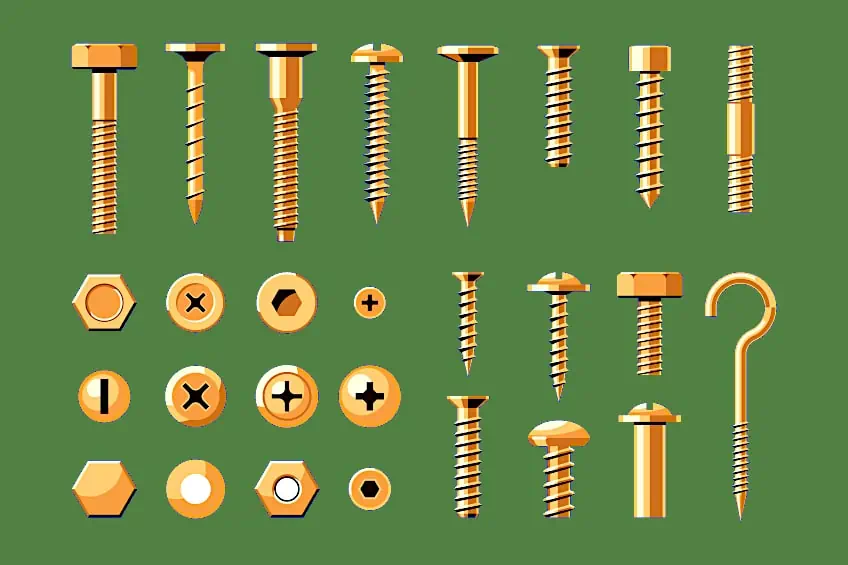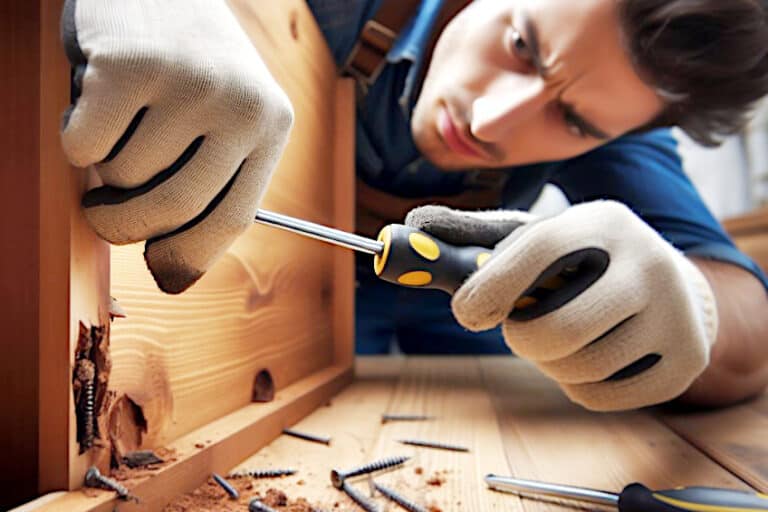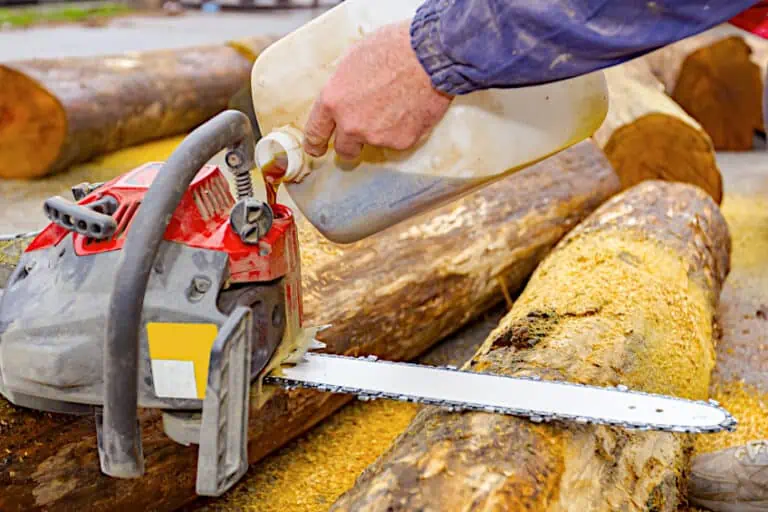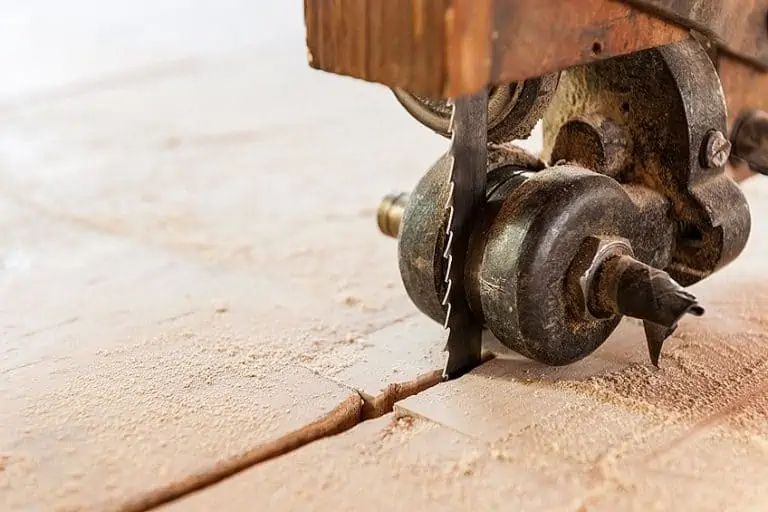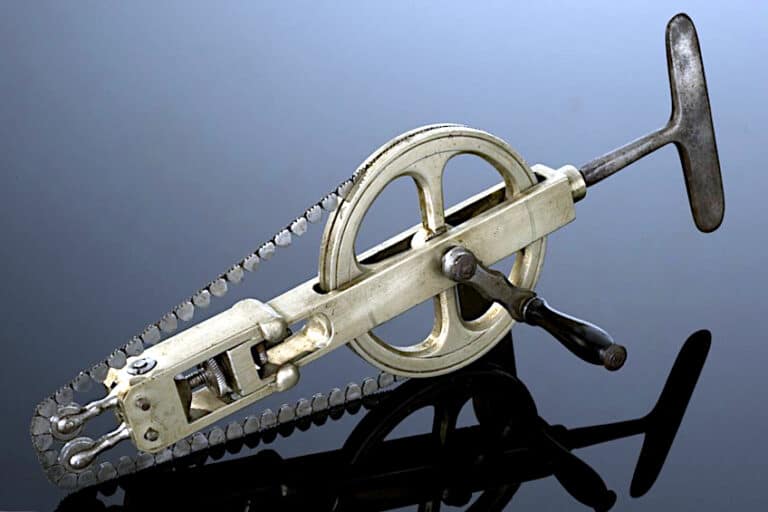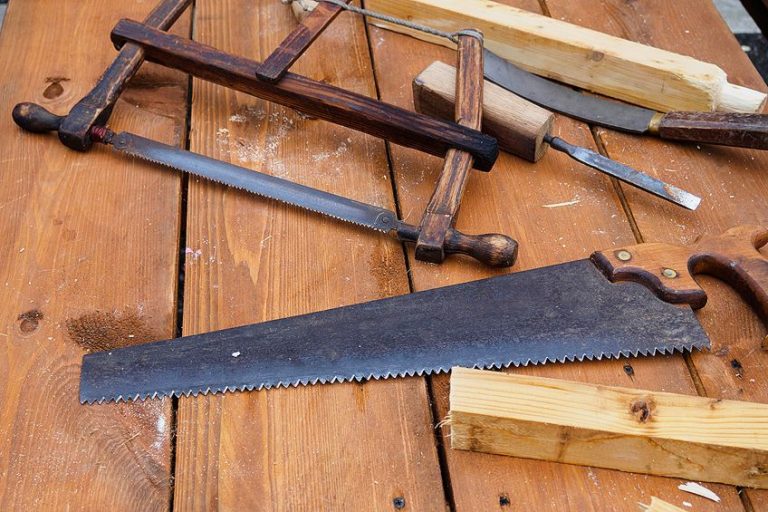Types of Screws – Complete Guide to Threaded Fasteners
Screws are arguably the most important fasteners used for any project, but did you know that there are many different types of screws? It can be overwhelming for a novice to stand in the screw aisle of a hardware store and simply choose the correct variation. Fortunately, we are here to get you on the right path, and we have provided you with all of the information needed to ensure that you are capable of understanding different types of screws and bolts. So, let’s find out about them!
What Are Screws?
Screws are fasteners that consist of a drive, head, shank, thread, and tip. These are classified as simple machines, which means that they are mechanical devices that change the magnitude or direction of a force. Screws are commonly used to join materials and keep items in place.
The existence of a circular/helical ridge, indicated as the male, due to the external thread, distinguishes fasteners such as machine screws and bolts. Many screws feature threads that are only meant to be paired with a nut with a suitable thread, such as a female thread.
Others are designed to penetrate soft materials as the screw gets inserted. Screws work primarily owing to the existence of a threaded component that enables them to penetrate various materials. This feature, in turn, gives birth to the usage of screws in connecting and holding surfaces together.
Different Types of Screws
Each type of screw has been specifically designed to be used with different surfaces and materials. With that said, it is crucial to never use screws with materials that they have not been designed for. This could lead to a series of problems such as snapping or getting it stuck in the material. Below, you will find an easy-to-read chart types of screws that exist, and this should give you a good overview of what you can expect before we go into detail.
| Type of Screw | Description |
| Decking screw | Manufactured with the elements in mind, decking screws are coated in rough threads on a smooth shank. This helps to fasten decking as well as pressure-treated wood decking. |
| Chipboard screw | Generally used with chipboard, these are used to fasten different types of chipboard, which is easy due to its fully threaded shank. |
| MDF (Medium density fiberboard) screw | These screws are used for assembling fiberboard furniture such as bookshelves. However, these need to be used after drilling a pilot hole. |
| Lag screw | Significantly different from standard wood screws, lag screws are incredibly strong. These are used to join heavy objects such as lumber. |
| Self-tapping screw | Manufactured for different materials, these screws prevent the need to drill pilot holes. |
| Sheet metal screw | Available in different head shapes and sizes, these screws are perfect for fastening sheet metal. |
| Wood screw | Available in different head shapes and sizes, these screws feature coarse threats that give them excellent grip when used on wood. |
| Masonry screw | This screw is used for drilling into concrete and different types of masonry. |
| Dowel screw | Better known as a double-ended screw, it is used to join two pieces of wood. |
| Security screw | These are essentially standard screws with tamper-proof heads. |
| Hammer-drive screw | Hammer-drive screws, also known as U-drive screws, are designed for heavy-duty fastening. |
| Drywall screw | Designed for drywall panels, these screws are available in two variations, S-type and W-type. |
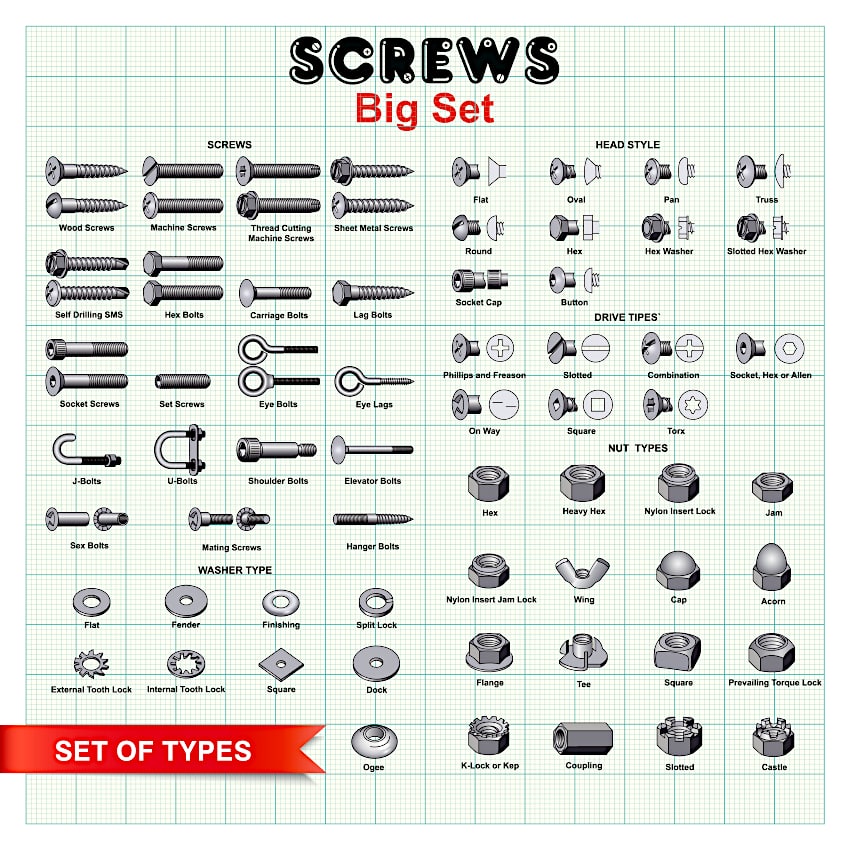
Understanding Different Screws
It is important to understand that there are different types of screws, but there are also different types of screwheads.
Before we look at the different screwheads, it is important to understand that different screws are designed for different materials and purposes.
Below, you will find more information, much like the aforementioned chart types of screws.
Wood Screws
Wood screws are often constructed of steel, brass, or bronze and are exclusively used for woodworking projects. They are easily identified by their unthreaded shanks at the highest point and rough threads at the tip. Just be sure you use the proper drill bits to produce a pilot hole first to avoid cracking your boards.
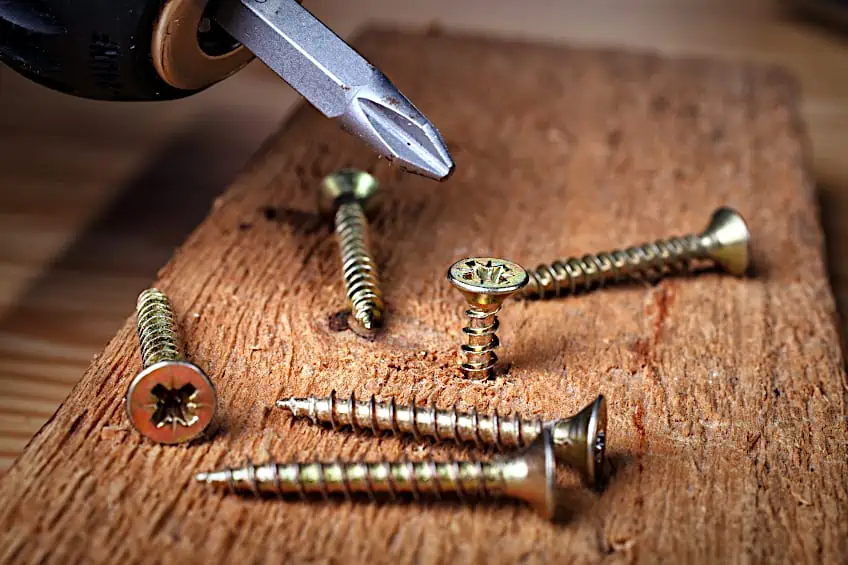
The pattern also acts as more than simply an identification, it helps the screw to effortlessly enter wood fibers without generating excessive splintering. The heads of wood screws can be flat, oval, or circular. Flathead screws are useful when you require screws to be hidden.
Lag Screws
Lag screws are wide in diameter and lengthy in length, allowing them to penetrate deeply into wood or other types of material. Lag screws are extremely strong and are covered with a corrosion-resistant coating to prevent deterioration from being exposed to weather or other building corrosives. They are often used in walls, decks, and other exterior buildings to produce very strong links.
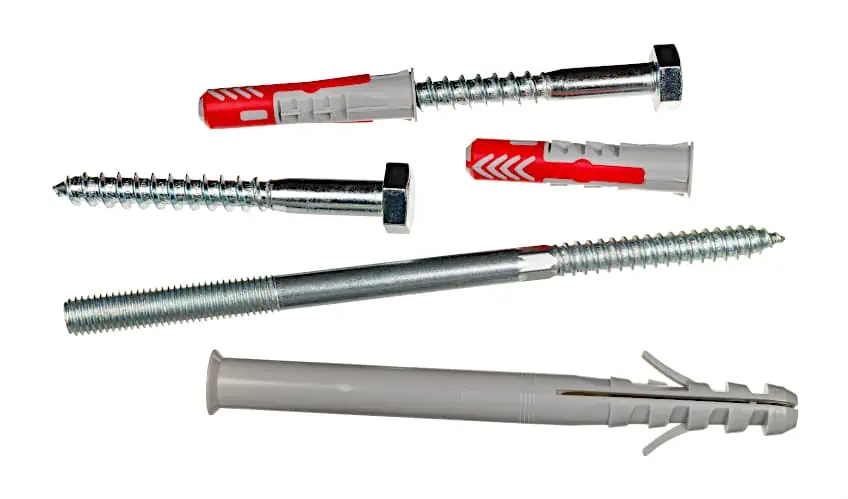
Masonry Screws
Masonry screws, often known as ‘anchors,’ are distinguished from other members of their group by their absence of a pointed tip. As a result, masonry screws are not intended for boring holes, so pre-drilling is necessary. You will also need a plastic wall-plug to anchor the screw. Drill the hole the exact width and depth of the plug and then insert the screw.
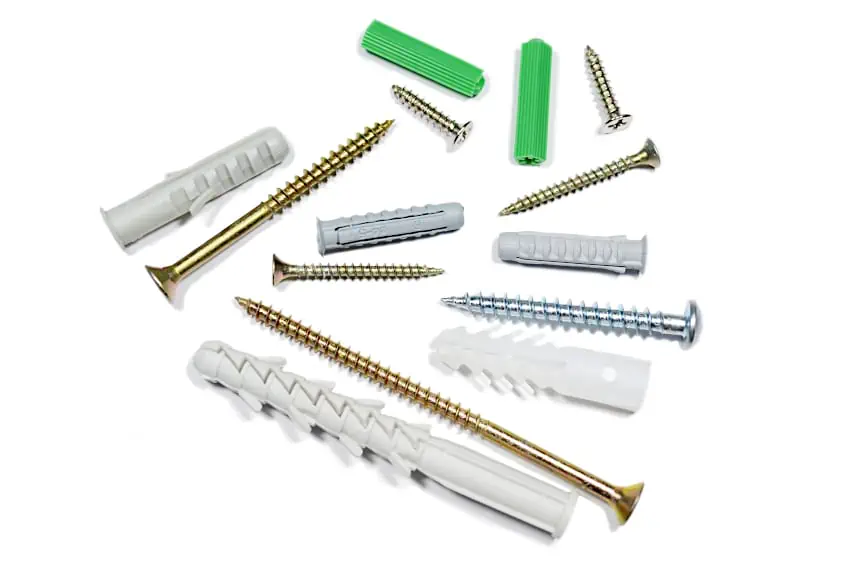
Dowel Screws
Dowel screws, also known as wood-screw threaded studs, lack heads in favor of lag threads on each end that descend to a blunt center. These screws are intended for use in pre-drilled pilot holes; however, their threads allow them to be driven into lumber without any prior drilling.
Dowel screws are typically used to connect or secure two separate pieces of wood together.
As a result, they are commonly used in furniture construction, finial installation, establishing end-to-end joins, and other woodworking applications, particularly those requiring blind holes as well as single concealed fasteners. Due to the absence of a head, installation will necessitate the use of a locker plier or driver tool.
Sheet Metal Screws
Sheet metal screws can be utilized in any situation where different materials, such as plywood, metal, plastic, or rubber need to be joined together. As a result, sheet metal screws come in a variety of shapes and sizes, and the material you are dealing with will determine the screw you select.
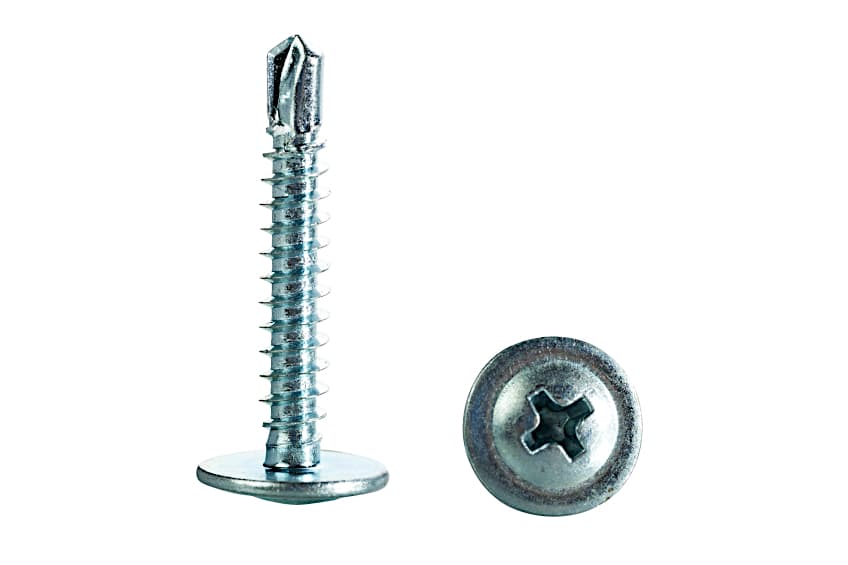
Types A, B, and AB are among the most common and widely used sheet metal screws. However, Type 25 is more unusual and utilized for particular applications, typically with plastic. They are available with a variety of heads, including hex washers, oval, and flat.
These screws are very efficient because of their sharp, tailored threads that provide a strong connection.
Self-Tapping Screws
Self-tapping screws reduce the need for pre-drilling by having threads that allow the hole to be drilled as the screw is being placed. These screws can be made for sheet metal, wood, and drywall. The biggest issue associated with these screws is that removing them from the surface results in stripping. They can also snap if overtightened, which is the worst-case scenario.
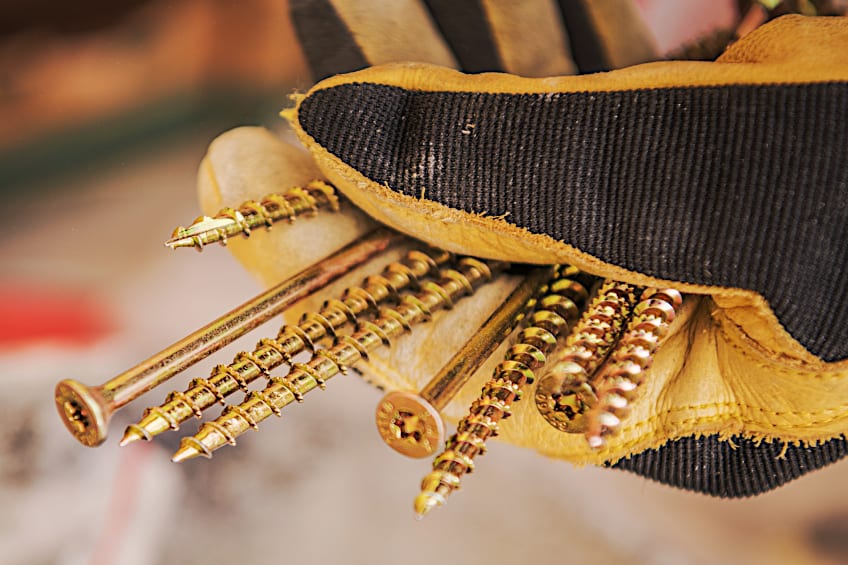
MDF Screws
Medium-density fiberboard screws have become the most commonly utilized screws in houses, appearing in molding, crown molding options, and the building of shelves and bookshelves (particularly those that need assembly). These screws are designed for a material that is dense, yet prone to flaking.
Unless you pre-drill a hole before you use a standard wood screw, using wood screws on an MDF surface will almost always result in breaking.
MDF screws make things simpler, especially when self-tapping ones are used. MDF screws, by definition, eliminate the requirement for predrilling and the possibility of splitting.
Chipboard Screws
Chipboard screws, also known as particle board screws, are self-tapping screws designed specifically for chipboard. The rough thread, which has double the thread pitch of conventional wood screws, makes it simple to drive them into varied densities of chipboard, particle board, and fiberboard.
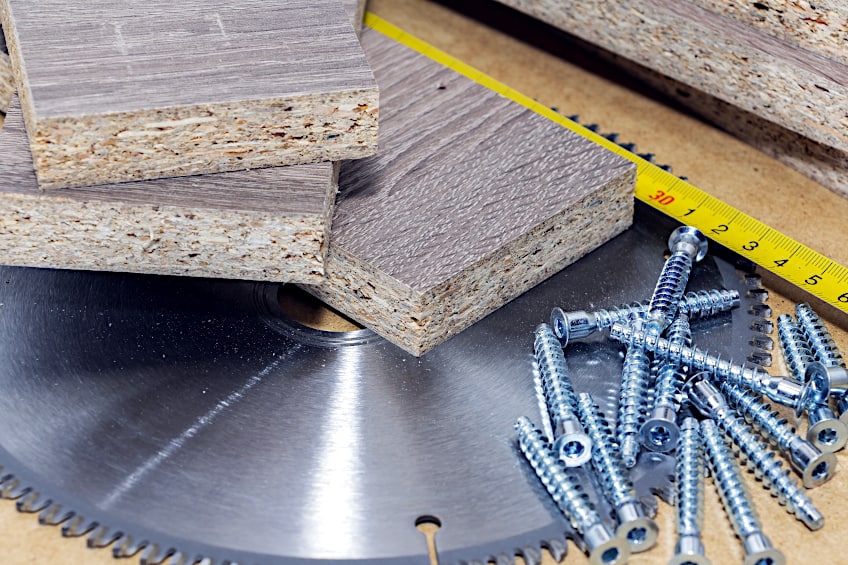
Because of their wide thread, they may also be readily inserted with standard drive bits as well as hand screwdrivers. The screw’s self-centering point also aids in straightening it and reducing the chance of breaking in the chipboard.
Hammer-Drive Screws
Hammer-drive screws additionally referred to as U-drive screws or simply drive screws, have been developed as a type of threaded rivet for heavy-duty fastening. Their round heads and unique construction ensure that they are sturdy, resilient, and long-lasting.
These screws are typically used to attach wall signage, nameplates, and other similar items.
They also have several start threads, huge helical angles, and an unthreaded pilot point. To rapidly and securely drive the screws in, you can use ordinary mallets, hammers, or hammer-drive equipment. You may need an undersized pre-drilled pilot, and the screw must be constructed of a tougher material than the item into which you wish to drive it.
Decking Screws
Decking screws are most typically used to attach outside deck flooring to a joist structure. Either directly, or by means of special decking clips. As a result, these screws are countersunk, which means they rest flat or slightly below the surface.
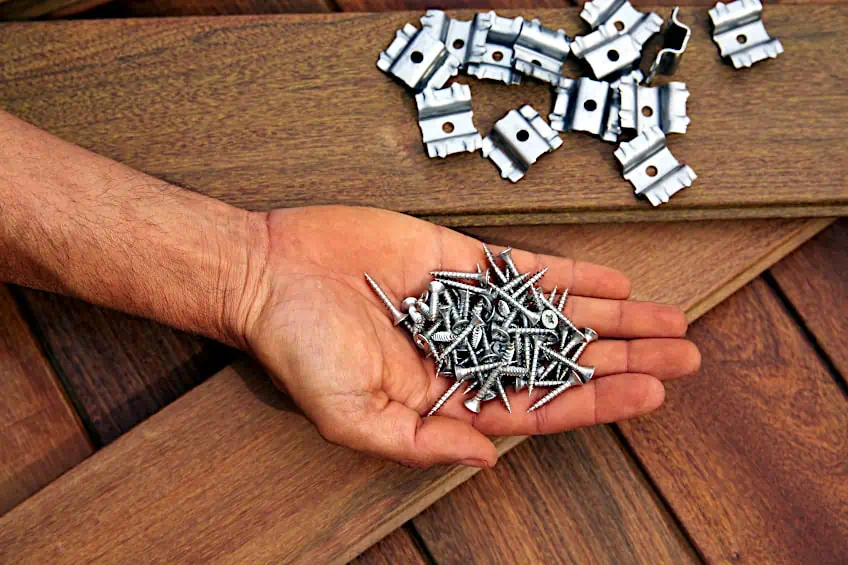
Decking screws have rough threads and an even top shank, comparable to wood screws. They are also intended to withstand rust and corrosion, which is another feature in common with wood screws.
Proper ACQ-compatible decking screws are to be used with pressure-treated wood decking. When installing composite decking, the majority of manufacturers recommend using stainless steel decking screws.
Drywall Screws
Drywall screws are available in two main types: coarsely-threaded or W-type screws used for securing drywall to wood, and finely-threaded or S-type screws designed to connect metal studs to the drywall. The latter additionally has a self-drilling tip, eliminating the need to pre-drill. Drywall screws cut into drywall very easily, due to razor-sharp heads that eliminate ripping while allowing for rapid installation.
There are several varieties of drywall screws available, such as those covered with zinc, ceramic, or phosphate, as well as those designed to minimize corrosion.
When hanging decorative objects, such as picture frames on drywall will also require combining drywall screws with task-specific wall-anchors.
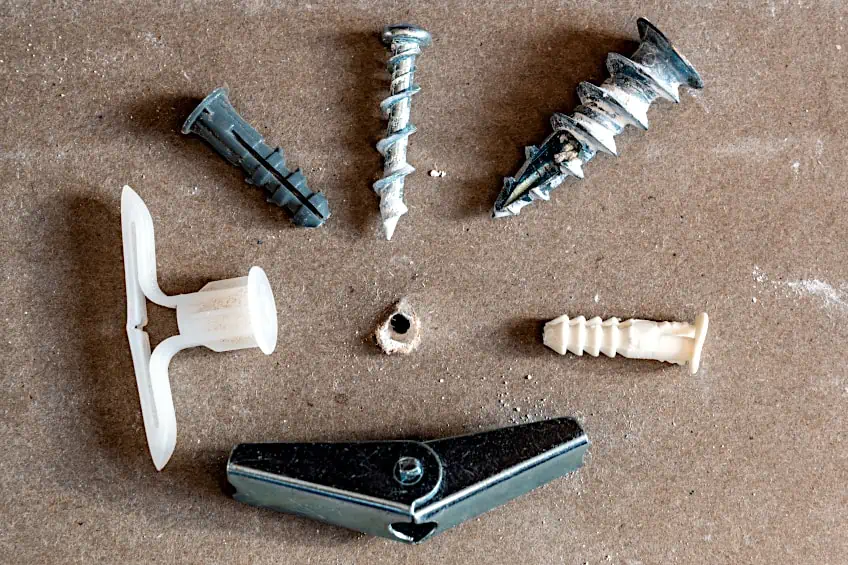
Different Types of Screwheads
Screwheads are classified according to their driving methods and naturally, some are more popular than others. Each screwhead can be further classified by its head shape, which we will also take a look at. There are six main types of screwhead that can usually be found on most of the screw types and sizes that we have covered above.
- Slotted: Screws that have slotted heads are considered to be the oldest and most widely used. A straight diagonal slot in the head makes screwdriver applications easier.
- Phillips: Features a cross-shaped slot on the head that requires the use of a Phillips-head screwdriver.
- Combination: This is essentially a combination of a slotted and Phillips head, allowing you to use either screwdriver.
- Square: This is more uncommon, but the square head allows you to work while minimizing the chances of slipping.
- Allen: Also known as the hex or socket head, the Allen head is commonly used with an Allen wrench.
- Star: The tight design of the star head prevents the possibility of a stripped head.
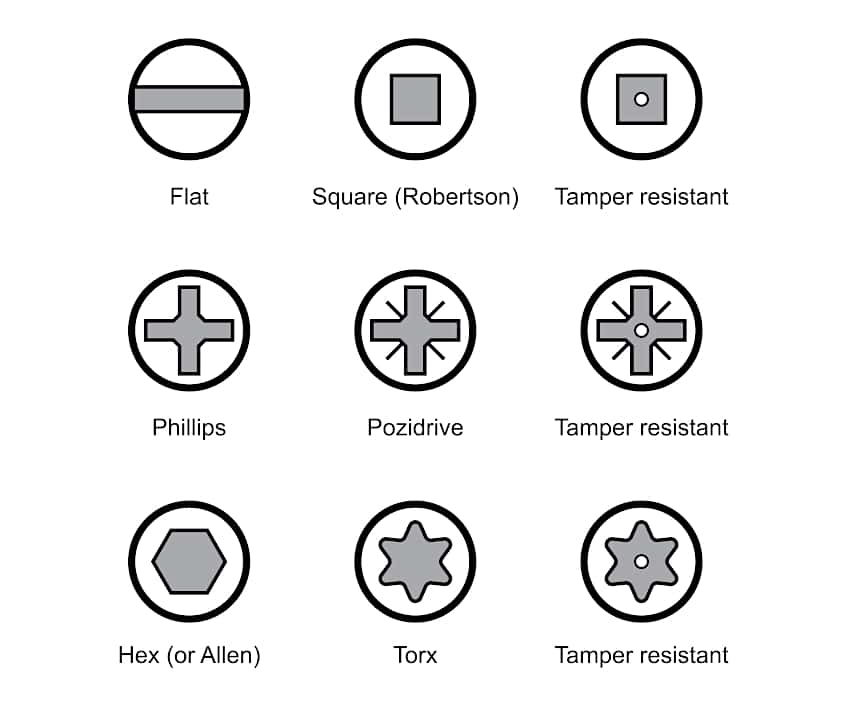
Different Types of Head Shapes
As we have mentioned before, there are also different types of head shapes. This can be applied to almost any type of screw which further increases the variations out there. Below are some of the most common types of head shapes.
- Flat: A countersunk head featuring a flat top.
- Oval: A countersunk head featuring a round top.
- Pan: A round head with a smooth vertical edge.
- Round: A dome-shaped head.
- Hex: A hexagonal head.
- Hex washer: A hexagonal head that is attached to a fixed washer.
- Socket cap: A cylindrical head socket featuring a socket drive.
- Button: A round head socket with a socket drive.
- Truss: A round screw with a broad head.
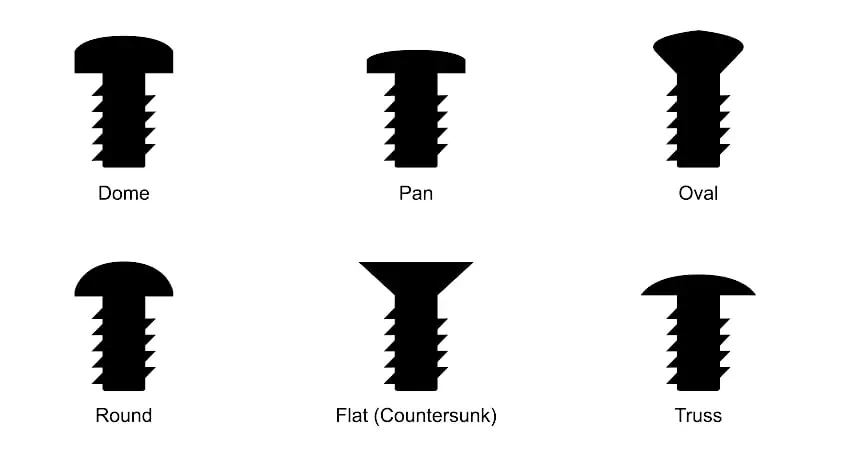
Security Screws
Security screws, commonly referred to as tamper-proof screws, are similar to regular screws; however, they have slight modifications to the slots in their heads that only allow them to be tightened. Since the slots will not offer any resistance when attempting to turn these screws in the opposite direction, they cannot be loosened, and are therefore tamper-resistant. Other security screw types have heads with indentations that do not match any of the commercially available screw drivers. As a result, any screw that cannot be removed using a Phillips head screwdriver or a slot-style head driver has become a security screw.
However, mankind has continually discovered a way past things, thus security screws are no longer as secure as they once were, due to the inventive minds of individuals who devised driver bits to go through any screw.
How to Choose the Right Screw
There is a lot more that goes into ensuring that you are using the correct screw for your project. Naturally, there are a handful of factors to be considered such as safety, security of the hold, ease of use, and protection.
Safety
Using the correct screw for the work ensures that materials hold correctly and reduces dangers such as screw material deterioration, broken wood, poor joints, and various other safety problems. The last thing that you would want is for the fastened material to break loose, especially if it has a lot of weight to it.
Secure Hold
Since screws are made with materials in mind, it’s critical to choose one that will keep materials together. Keep in mind that when securing two objects together, the screw should penetrate deep enough into the second object. Also ensure that the thickness of the screw is suitable for the weight of the object, or the amount of pressure that the bond will be subjected to.
When using fasteners with brittle materials, keep in mind that using a plug will give the screw something to bore onto, providing a more secure hold than simply relying on a screw alone.
Ease of Use
Fastening different materials should be simple, so choosing the right screw is critical. Screws should readily pierce the suitable materials when driven with the proper drill, wrench, impact driver, or screwdriver. So, if you choose to use wood screws on a wood surface and it fails, you will need to question the quality of the screw itself.
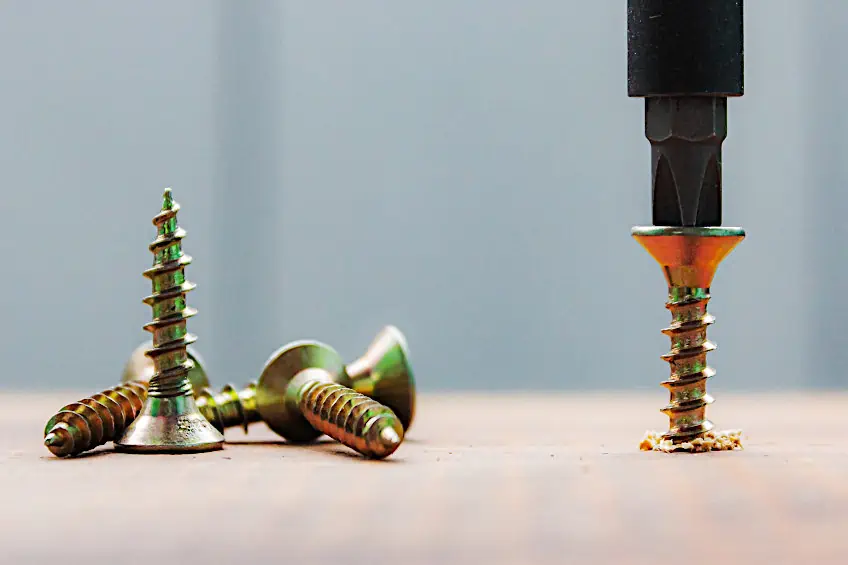
Protection
Screws are made to safeguard the materials they link. Choosing the correct screw head, thread, and length, helps prevent the wood from breaking down, drywall from sagging, and metal from sliding.
If the material suddenly shifted while inserting a screw, it could result in serious injury.
Screw Materials
Certain materials are better suited for aesthetically pleasing fasteners, others for exterior construction. The most frequent and worst error novices make is screw material choice. Every expert and DIYer needs to understand the fundamental differences between the components to avoid rapid deterioration and rusting. Some of the best materials for screws include the following:
- Brass: These are fantastic for door hinges as well as cup hooks while maintaining an aesthetic appeal.
- Hardened steel: Also known as construction screws, these are primarily used in structural projects and there are also coated variants for exterior use.
- Stainless steel: Very similar to traditional steel, these screws are rust-resistant and can be used outdoors. These are perfect for outdoor projects such as bird houses, but we recommend using a stainless steel bolt for larger structures.
- Steel: These are standard interior screws, but are prone to rust. It is highly recommended that you never use these screws on any exterior application as it will deteriorate over time.
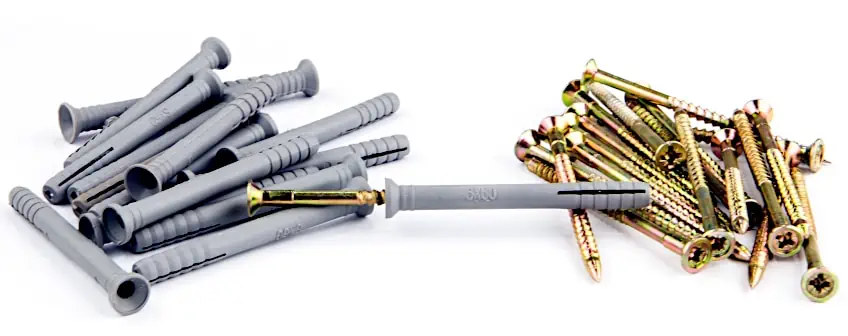
Basic Screw Terms
When following some DIY guides, you can easily get hit with complex jargon that can make life unnecessarily complicated. However, we believe in keeping things simple to ensure that you can make the most of your DIY experience. Below, you will find some common and not-so-common terms that are used when working with screws.
Cam Out
This is a term that refers to the driver sliding out of the screw head. Camming out repeatedly is what leads a screw to strip. When the slot in the head has been damaged to the point where the driver does not find sufficient purchase, it becomes impossible to completely insert a screw or remove it.
Almost every advancement in screw head design has the goal of lowering cam out.
Unfortunately, if you are reckless with your drilling or if you are using the wrong bit or screwdriver, this can easily occur. It is advisable to stick to newer screwhead designs such as Robertson or Torx if you are prone to cam out.
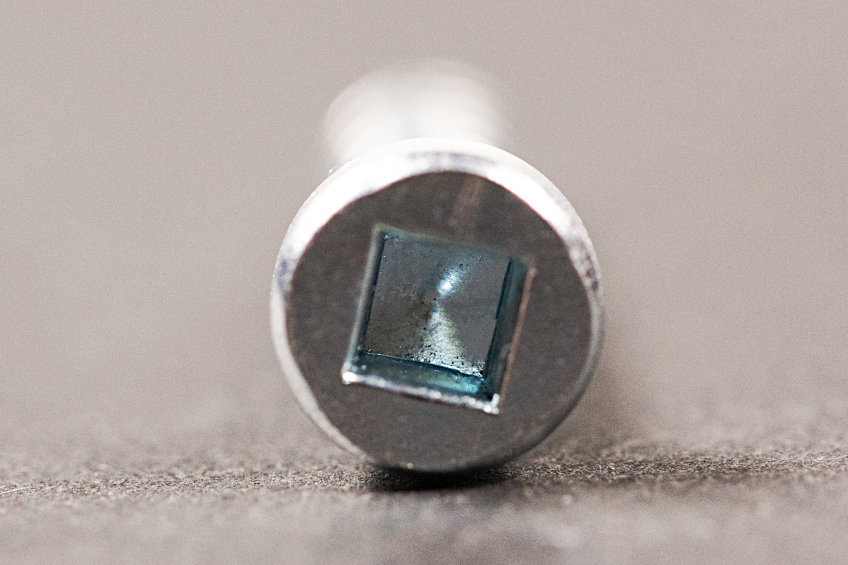
Torque
Torque refers to the rotational force exerted on a screw or other rotating item. It is important to understand that too much torque results in cam out. Fortunately, the slip clutch of your drill restricts the amount of torque that can be applied to a bolt.
Overdriving
Overdriving occurs when the screw is driven too far. This can lower the amount of force required to remove a screw by up to 20%, but it also increases the possibility of removing the head or possibly the threads.
In the worst-case situation, your material splits, which is more prevalent on softwoods as well as softer hardwoods.
Fortunately, you can avoid overdriving by learning how to use the slip clutch on your drill or just driving slowly if you are driving by hand.
Countersink
Countersink additionally refers to the name of the drill bit that is used to cut such a hole. A conventional hole punched into the top of a screw hole that enables the screw to lie flush with or beneath the surface of the material being driven into.
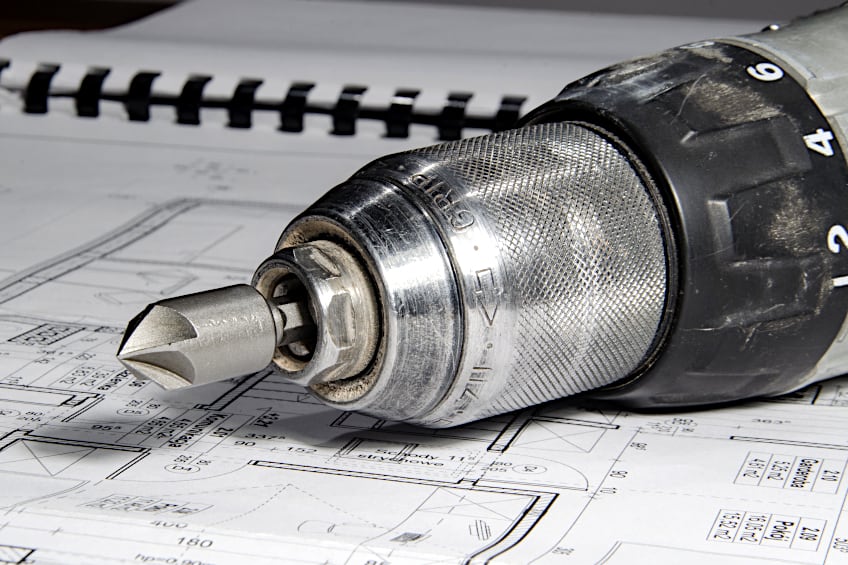
Different Types of Screw Threads
Thread qualities are something to consider. In general, if you drill a pilot hole with care and pay attention to every aspect of your job, you should not be concerned with these particular characteristics until you have gained some expertise. These characteristics may be rather subtle, so let’s go over a couple of them.
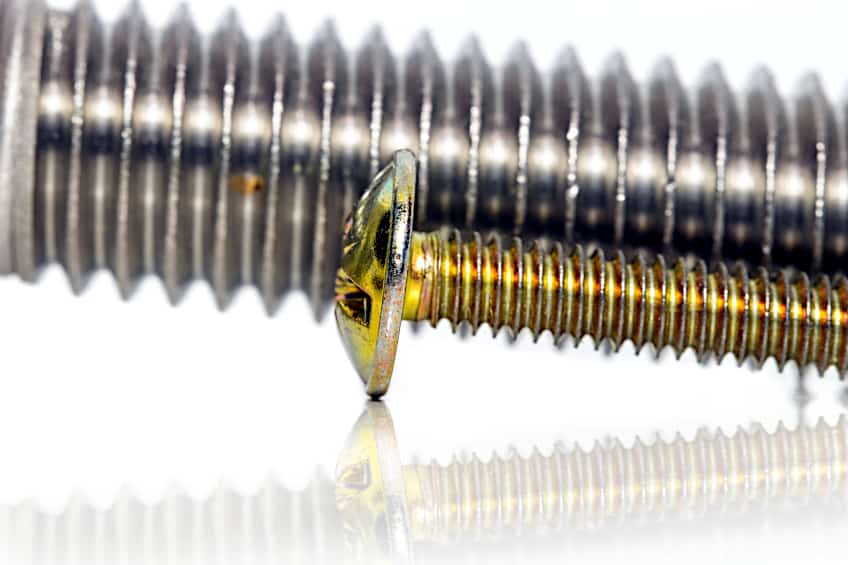
Self-Tapping Threads
Self-tapping screws are a type of screw that develops its own threads through the material into which it is inserted. This is possible by grasping as much of the material as possible. This is usually advertised in the screw’s name or specification list.
Thread cutting as well as thread forming are the two forms of self-tapping screws.
Thread-Cutting Screws
Thread-cutting screws are a form of self-tapping screw with cutting edges as well as chip chambers that generate a mated thread through the elimination of material from the hole. This type of thread produces an incredibly tight, vibration-resistant grip.
Thread-Forming Screws
Thread-forming screws are comparable to thread-cutting screws in that they remove material to create threads. But rather than removing material, they displace it, moving it out of the way. This type of thread forms an extremely tight grip and it is typically found in various softwoods or plastics.
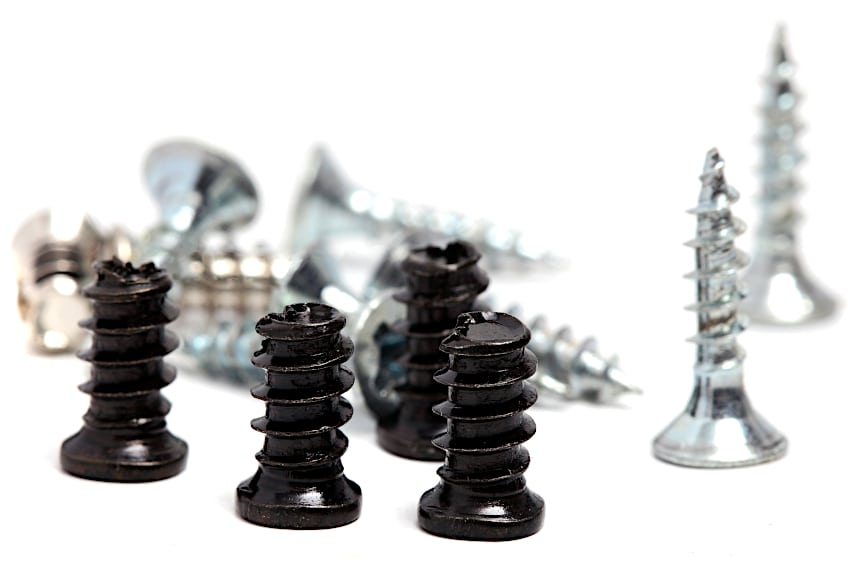
Milling Ribs
CEE threads, knurl, underhead cutting ribs, or knurled shoulder, are all names for these threads. This is a short area of steep threading beneath the screw head and above the usual threads. The function of the aforementioned ribs is to gradually widen the hole, allowing a bigger top shank to easily sink deeper into the material.
Hi-Lo Threads
This is a unique thread where one screw has two distinct thread sizes. High threads are taller and sharper than standard threads, necessitating less force to drive in.
Because the low threads allow more material between the high threads and the shaft is narrower than normal screws, these screws are particularly resilient to pull-out along with vibrational weakening effects.
These threads are ideal for screws meant to be used in various soft materials.
How Bolts Are Different
Iron, steel, and various other metals, even wood, and plastic, are used to make bolts. The key difference between bolts and screws is that bolts require a nut plus a pre-existing hole to operate properly during placement. Bolts are composed of a head at the highest point, a shank, plus a chamfer at the bottom. The head provides a surface for tools that can transmit or withstand torque.
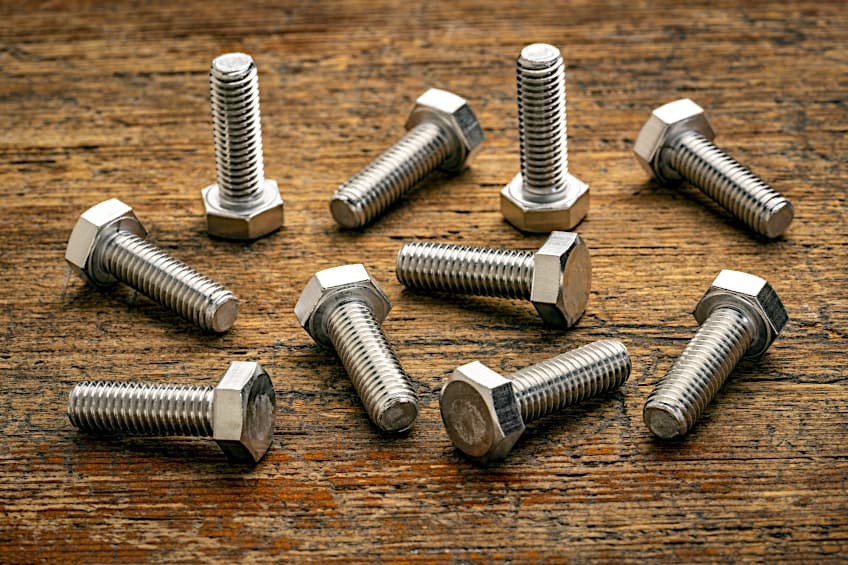
The threads are located on the shank, which is the longest component of the bolt. Lastly, the chamfer makes it possible to put the bolt into a pre-tapped nut or hole. Bolts are classified into several types according to their head form and work requirements. Bolts are also very easy to identify as they usually go by the shape that they form. Bolts are generally stronger than screws, depending on the material, as they are thicker.
Understanding how to identify different types of screws is an important skill to have and will also save you money as you will not buy the wrong product. Additionally, you should have a good idea of how to use different types of screws and when you should be using a bolt instead. We hope that this guide serves you well over your next few DIY projects as you learn how to use different types of screws and how they fasten various materials. We wish you the best of luck!
Frequently Asked Questions
Why Are There Different Screw Types and Sizes?
There are so many different projects and applications for different types of screws and bolts that it is impossible to have a one-size-fits-all product. For example, you will not be able to use wood screws for a metal surface, which is the reason for different variations of these products.
How Many Screw Types Are There?
It is easy to assume that there are over 30 different types of screws available. However, the reality is that there are only a handful of primary screw types. The rest of the screws that are found on the market are based on its screw head, material, and size. Additionally, screws can be further categorized according to the material that they are meant to be used on, thus creating more types.
What Are the Most Common Types of Screws for Woodwork?
While most novice DIY enthusiasts are content with using any type of screw for their project, most of us would use wood screws. These are available with different heads and in different materials, depending on the type of wood that you are working with.

I have been into woodworking since 2005 and woodturning since 2011. Because of my love for wood and woodworking, I started woodhappen.com to teach other enthusiasts about how to finish and seal wood, the best woodworking tools, the different types of wood, and everything else related to woodworking! Read more about me here.

